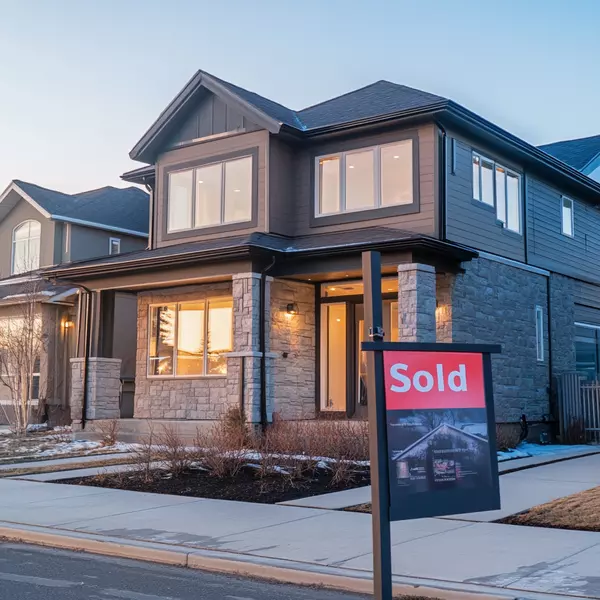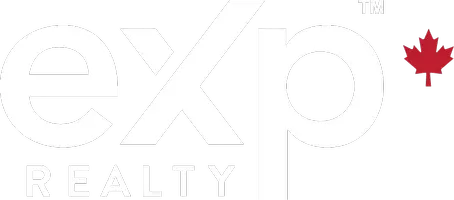

The Emotional Journey of Downsizing: Overcoming the Overwhelm
Downsizing is more than just a logistical process; it's an emotional journey that touches on memories, identity, and the future. If you’ve lived in your home for decades, the thought of sorting through all those belongings can feel like an impossible task. But, what if I told you it doesn’t have to be? In this guide, we’ll explore how to tackle the overwhelming process of downsizing with practical strategies, emotional support, and a step-by-step approach that makes it all manageable. Understanding the Emotional Challenges Why Downsizing Feels Overwhelming Downsizing is not just about moving from one home to another; it's about leaving behind a space filled with memories, milestones, and moments that define your life. This process can trigger feelings of sadness, guilt, and anxiety. The idea of parting with possessions, even those you no longer need, can feel like losing a part of yourself. The Fear of Losing Cherished Memories One of the biggest fears when downsizing is losing cherished memories. Every item, from an old photo album to a piece of furniture, holds a story. The fear that these stories will be lost if you let go of the items can make the process feel paralyzing. But it’s important to remember that memories reside within you, not just in your belongings. Strategies for Overcoming Overwhelm Now that we’ve acknowledged the emotional weight of downsizing, let’s look at some strategies to make the process less daunting. Build a Support System You don’t have to go through this alone. Having a support system—whether it’s a friend, family member, or even an online community—can make a huge difference. Engaging with others who are also downsizing can provide motivation and practical tips, making the journey feel less lonely. Start Small and Set Achievable Goals Feeling overwhelmed by the sheer volume of belongings? Start small. Focus on one drawer, one closet, or one room at a time. Set achievable goals for each day, and before you know it, you’ll see progress. These small wins can build momentum and make the entire process feel more manageable. Tackle Emotionally Neutral Areas First Begin with areas that are less emotionally charged—like the laundry room, kitchen, or garage. These spaces typically contain items that are easier to sort through and don’t hold as much sentimental value. Starting here can give you the confidence to tackle more emotionally significant areas later. Addressing Emotional Attachments Emotional attachments to belongings can make decluttering difficult. Acknowledge these feelings and remind yourself that memories reside within you, not the objects themselves. Consider taking photos of cherished items or writing down associated memories to preserve them without keeping the physical items. Combat Decision Fatigue Decision fatigue is real, especially when faced with too many choices. To combat this, tackle one small area at a time and set a timer for focused decluttering sessions. This approach helps prevent burnout and encourages consistent progress. Embrace the KonMari Method Marie Kondo’s method of asking whether an item "sparks joy" can be a powerful tool for decluttering. If an item doesn’t bring joy or serve a purpose, it may be time to let it go. This method helps you keep only what truly matters, making the downsizing process more meaningful and intentional. Careful not to underprice your home when selling. Practical Tips for a Smooth Transition After sorting through your belongings, the next step is ensuring a smooth transition to your new space. Here’s how: Focus on the Positive Aspects Concentrate on the benefits of downsizing, such as financial freedom, a simpler lifestyle, and less maintenance. Shifting your focus to these positives can help alleviate feelings of guilt and anxiety about leaving your old home behind. Create Familiarity in Your New Space In your new home, surround yourself with familiar furniture, photos, and artwork to create a sense of comfort and continuity. This familiarity will help ease the transition and make your new space feel like home. Seek Professional Help If the process feels too overwhelming, consider hiring a professional organizer or therapist to guide you through the emotional and practical aspects of downsizing. These professionals can provide expert advice, help you stay on track, and ensure that the process is as smooth and stress-free as possible. Edmonton Bungalows Stony Plain Bungalows Spruce Grove Bungalows Sherwood Park Bungalows St. Albert Bungalows Fort Saskatchewan Bungalows Leduc Bungalows Conclusion Downsizing doesn’t have to be an overwhelming or paralyzing experience. By understanding the emotional challenges, building a support system, and breaking down the process into manageable steps, you can transform this journey into an opportunity for growth and freedom. Remember, it’s not about losing your past; it’s about making room for your future. FAQs 1. How do I start the downsizing process?Start small by tackling one room or even one drawer at a time. Set achievable goals and build momentum with each small win. 2. What should I do with sentimental items?Consider taking photos of sentimental items or writing down associated memories. This way, you can keep the memories without holding onto the physical objects. 3. How can I overcome the emotional attachment to my home?Focus on the positive aspects of downsizing, such as simplifying your lifestyle and gaining financial freedom. Surround yourself with familiar items in your new space to create comfort. 4. Should I hire a professional to help with downsizing?If you’re feeling overwhelmed, hiring a professional organizer or therapist can be a great way to get expert guidance and ensure a smooth, stress-free process. 5. What are the benefits of downsizing?Downsizing can lead to financial freedom, less maintenance, and a simpler lifestyle, all of which can contribute to a more fulfilling and stress-free retirement.
Read More

July 2024 Edmonton Real Estate Market Update: What You Need to Know
July 2024 Edmonton Real Estate Market Update: What You Need to Know The real estate market in Edmonton this July has been a roller coaster of activity. Whether you're looking to buy your first home or considering selling, understanding the latest market trends is crucial. Let's dive into the key dynamics shaping the Edmonton real estate landscape and what they mean for you. Overview of the July 2024 Edmonton Real Estate Market July has been a month of contrasts in Edmonton's real estate market. On one hand, there's been a noticeable drop in new listings, yet sales have surged, creating a unique market environment. This combination has led to a significant reduction in available inventory, making it a seller's market. If you're planning to buy or sell, being aware of these shifts is essential. Supply and Demand Dynamics In July 2024, new listings in Edmonton decreased by 5%, while sales saw a remarkable 21% increase. This surge in buyer activity, coupled with fewer homes on the market, has resulted in a 20% drop in overall inventory. For potential buyers, this means increased competition for available properties. Sales and Inventory Insights The Greater Edmonton Area saw 2,941 units sold in July, up from 2,847 in June, signaling a strong resurgence in buyer activity. Despite the increase in sales, the inventory remains tight, with only 5,866 units available—slightly down from June but still higher than in May. Detached Homes Detached homes continue to be in high demand, with a 7% increase in sales. The benchmark price for a detached home rose to $452,000, and the average price hovered around $500,000. This segment of the market is thriving, making it an excellent time for sellers of detached homes to capitalize on their investments. Apartments Apartments present a different story. New listings for apartments dropped by 32%, and sales followed suit with a 17% decline. The benchmark price for apartments stands at $193,700, making them an attractive option for buyers looking for affordability in a competitive market. Attached Homes The attached homes segment has shown dynamic growth, with an 8% increase in new listings and a 29% surge in sales. The benchmark price for these properties climbed to $261,000, reflecting their growing popularity among buyers. Price Trends in July 2024 The overall benchmark price for properties in Edmonton increased to $392,700. Detached homes averaged $500,000, while semi-detached homes maintained stability at $405,000. These price trends indicate ongoing demand, particularly for detached and semi-detached homes, which continue to be sought after by buyers. Market Conditions Homes are selling faster in July, with the average days on the market for detached homes dropping to 32 days, compared to 44 days a year ago. This decrease in time on the market further emphasizes the competitive nature of the current market. Economic Influences on the Market Interest rates play a significant role in shaping the real estate market. Anticipated rate cuts by the Bank of Canada are expected to stimulate market activity, as lower interest rates make borrowing more affordable. Additionally, Edmonton's growing popularity, driven by domestic migration and steady immigration, continues to fuel housing demand. Future Market Outlook Looking ahead, the Edmonton real estate market is expected to maintain price stability, particularly in the semi-detached and condo markets. These segments are increasingly attractive to investors, offering potential for growth. Price Stability The market is likely to see stable prices in the coming months, with semi-detached homes and condos showing the most promise for appreciation. New Construction and Its Impact Upcoming construction projects, especially in the row houses and townhouses segments, are anticipated to have a positive impact on the market, providing much-needed inventory to meet growing demand. Strategies for Buyers For buyers, especially first-timers, acting quickly when a desirable property becomes available is crucial in this competitive market. Exploring more affordable options, such as apartments, can be a strategic move to secure a property within budget. Strategies for Sellers Sellers, particularly those with detached homes, are in a strong position. With high demand and limited supply, this is an advantageous time to sell. Pricing your home competitively and ensuring it is well-staged can help attract multiple offers and achieve the best possible outcome. Conclusion The Edmonton real estate market in July 2024 presents both opportunities and challenges. Whether you're buying or selling, staying informed about market trends and working with knowledgeable professionals like those at BT Group can make all the difference. As we move into the latter half of the year, keeping an eye on market dynamics will be key to making the most of your real estate transactions. FAQs What does a seller's market mean for buyers? A seller's market means fewer homes are available, leading to increased competition among buyers. It often results in quicker sales and potentially higher prices. Is now a good time to buy an apartment in Edmonton? Yes, with lower prices and less competition in the apartment segment, now could be a strategic time to buy. How do interest rates affect my buying power? Lower interest rates increase your buying power by reducing the cost of borrowing, making homes more affordable. What should sellers focus on in this market? Sellers should focus on pricing their homes competitively and ensuring they are well-staged to attract serious buyers quickly. Will prices continue to rise in Edmonton? Prices are expected to remain stable, with potential growth in certain segments like semi-detached homes and condos.
Read More

Navigating Financial Pressures as a First-Time Home Buyer in Edmonton
Introduction Buying your first home in Edmonton can feel like navigating a labyrinth of financial pressures. Between rising housing prices, high mortgage rates, and additional costs, it’s no wonder many first-time buyers feel overwhelmed. Understanding these pressures and knowing how to manage them is crucial for a smooth home-buying experience. In this guide, we’ll walk you through the financial challenges and provide actionable strategies to help you make informed decisions. Understanding the Financial Pressures Rising Housing Prices Edmonton’s housing market has seen a significant increase in average home prices, now approximately $441,350. This trend places added pressure on first-time buyers to adjust their budgets and expectations. The rising costs can make it seem like the dream of homeownership is slipping away. Here is an example of less expensive homes between $300,000 and $360,000. High Mortgage Rates High mortgage rates contribute significantly to the financial strain. Higher interest rates mean higher monthly payments, which can impact your overall budget. Shopping around for the best mortgage rates and considering fixed-rate options are essential to managing this challenge. Additional Costs Homeownership comes with more than just a purchase price. First-time buyers need to factor in property taxes, home insurance, closing costs, and potential maintenance expenses. These hidden costs can quickly add up, impacting your financial comfort. Budgeting and Pre-Approval Determining Your Budget Start by establishing a realistic budget. This should include not only the home price but also additional costs such as taxes, insurance, and maintenance. A well-defined budget helps prevent financial strain and ensures you’re looking at homes within your means. If you are looking for homes between $360,000 and $420,000 you will find it here. Getting Pre-Approved Securing a mortgage pre-approval is a crucial step. It provides clarity on how much you can borrow and shows sellers you are a serious buyer. However, it’s essential to use this as a guide rather than a limit, ensuring that your monthly payments are manageable within your budget. Leveraging Incentives and Programs Federal Programs for First-Time Home Buyers The First-Time Home Buyer Incentive can be a game-changer. This program helps reduce your monthly mortgage payments without increasing your down payment, making homeownership more affordable. A simple example is extending the amortization of your mortgage. Edmonton-Specific Programs Edmonton offers its own set of programs, such as the Edmonton First Place Program. This initiative defers the land portion of the mortgage, reducing initial costs for eligible buyers. Exploring these local resources can provide significant financial relief. Tax Breaks and Rebates Take advantage of available tax breaks and rebates, such as the GST/HST New Housing Rebate. These can help reduce the financial burden of buying a home and make the process more manageable. Improving Financial Health Enhancing Your Credit Score A higher credit score can lead to better mortgage terms. Focus on paying bills on time, reducing credit card balances, and managing debt effectively to improve your score. Saving for a Down Payment Aim to save more than the minimum down payment required. A larger down payment can reduce the amount of interest paid over the life of the mortgage and help you secure better loan terms. Choosing the Right Location Researching Neighborhoods When selecting a neighborhood, consider future growth and amenities. Some areas may offer better long-term value and affordability, aligning with your lifestyle and investment goals. Considering Infill Developments Infill developments can provide more affordable housing options in established areas. While they might come with higher initial prices, they often offer greater convenience and potential for future value appreciation. Hidden Costs and Long-Term Planning Understanding Additional Costs Be aware of hidden costs such as closing fees, legal fees, and moving expenses. These can add up quickly, so it’s important to budget for them as part of your overall home-buying plan. Planning for Future Resale Value Consider long-term factors like neighborhood development and future resale value when choosing a home. This foresight can help ensure that your investment remains sound and that you get the best value for your money. Edmonton-Specific Considerations Property Taxes and Land Title Registration Property taxes in Edmonton vary based on location and property size. Include these in your monthly expenses. Additionally, registering your land title involves certain fees and paperwork that must be factored into your budget. Market Trends and Neighborhood Selection Stay informed about Edmonton’s housing market trends. Understanding shifts from downtown to suburban areas can help you choose a neighborhood that fits your lifestyle and investment goals. Conclusion While the financial pressures of buying your first home in Edmonton are substantial, careful planning and strategic use of available resources can ease the burden. By budgeting wisely, leveraging government incentives, and improving your financial health, you can successfully navigate the challenges of the housing market. FAQs What is the average home price in Edmonton?As of recent figures, the average home price in Edmonton is approximately $441,350. How can I improve my credit score before buying a home?Pay bills on time, reduce credit card balances, and manage your debt to improve your credit score. What are the main benefits of the First-Time Home Buyer Incentive?This incentive helps reduce monthly mortgage payments without increasing your down payment, making homeownership more affordable. How much should I save for a down payment?Aim to save more than the minimum down payment to reduce overall interest and secure better loan terms. What are common hidden costs when buying a home?Common hidden costs include closing fees, legal fees, and moving expenses. Budget for these to avoid unexpected financial strain.
Read More

Understanding the New 30-Year Amortization for Edmonton's First-Time Home Buyers
Overview of Canada’s New 30-Year Amortization Program Starting on August 1, 2024, Canada introduced a new 30-year amortization program designed to ease the financial burden on homebuyers, particularly first-time buyers. This initiative is part of the government's broader strategy to improve housing affordability across the country. What Led to the Introduction of the 30-Year Amortization Program? Historical Mortgage Trends in Canada Historically, Canada has seen fluctuating mortgage terms, with 25-year amortization periods being the norm. However, with rising housing prices, there has been growing pressure to extend these terms to make homeownership more accessible. Government Initiatives to Support First-Time Buyers In response to these challenges, the Canadian government has implemented several programs aimed at first-time homebuyers. The 30-year amortization program is the latest in a series of measures designed to enhance affordability. Key Features of the 30-Year Amortization Program Who is Eligible for the Program? The program is open to first-time homebuyers who meet specific criteria, including income thresholds and credit requirements. How Does the Program Differ from Previous Mortgage Options? Unlike the traditional 25-year amortization, the 30-year option allows for lower monthly payments, although it does result in higher interest payments over the life of the loan. Advantages of a 30-Year Amortization for Homebuyers Lower Monthly Payments: What It Means for You One of the primary benefits of the 30-year amortization is the reduced monthly payment, which can make it easier for buyers to manage their finances. Long-Term Financial Planning: Pros and Cons While the lower payments offer immediate relief, buyers must consider the long-term implications, such as the total interest paid and the extended commitment. Potential Drawbacks of a 30-Year Amortization Impact on Total Interest Paid Over Time A longer amortization period means more interest paid over the life of the mortgage. Buyers need to weigh this against the benefits of lower monthly payments. Risk of Longer Debt Commitment Committing to a mortgage for 30 years can be daunting, especially with the uncertainties of the future financial landscape. The Effect on the Canadian Housing Market Predicted Trends in Real Estate Demand The introduction of this program is expected to increase demand for housing, particularly among first-time buyers who were previously priced out of the market. Impact on Housing Prices and Affordability While the program aims to make housing more affordable, it could also lead to increased competition, driving prices higher in some markets. Real-Life Examples: How Homebuyers Are Benefitting Case studies show that first-time buyers are finding it easier to enter the market with extended amortization, though the long-term financial impact varies. Final Thoughts on the 30-Year Amortization Program Overall, Canada’s new 30-year amortization program offers both benefits and challenges. It provides immediate relief in the form of lower monthly payments but comes with the trade-off of higher long-term costs. FAQs What Should First-Time Buyers Consider?First-time buyers should carefully assess their long-term financial goals and consider the trade-offs between lower payments and higher overall interest. Can I Switch to a 30-Year Amortization if I Already Have a Mortgage?No, right now that is not available in the current program. How Does This Program Compare to Other Mortgage Options?Compared to shorter amortization periods, the 30-year option offers lower payments but at the cost of increased interest over time. What Are the Long-Term Implications of Choosing a 30-Year Amortization?Buyers should consider the impact on their long-term financial health, including retirement planning and overall debt levels. Is This Program Right for Everyone?The 30-year amortization program is not suitable for everyone. Buyers should consult with a financial advisor to determine if it aligns with their financial goals.
Read More
Categories
- All Blogs (22)
- downsizing (2)
- Eco-friendly Homes (1)
- Edmonton Bylaws (2)
- Events & Community News (4)
- First Time Home Buyer (4)
- Gardening & Landscaping (1)
- Home Buying Tips (14)
- Home Insurance (2)
- Home Selling Tips (6)
- How to (9)
- increase home value (8)
- Interior Design (1)
- Local Market Trends (8)
- market Influences (11)
- Market Update (9)
- Migration (2)
- Mortgage Info (2)
- Moving & Relocation (8)
- Neighborhood Profiles (4)
- Real Estate FAQs (15)
- Real Estate Investment (1)
- Real Estate Laws & Regulations (2)
- Technology in Real Estate (2)
Recent Posts










